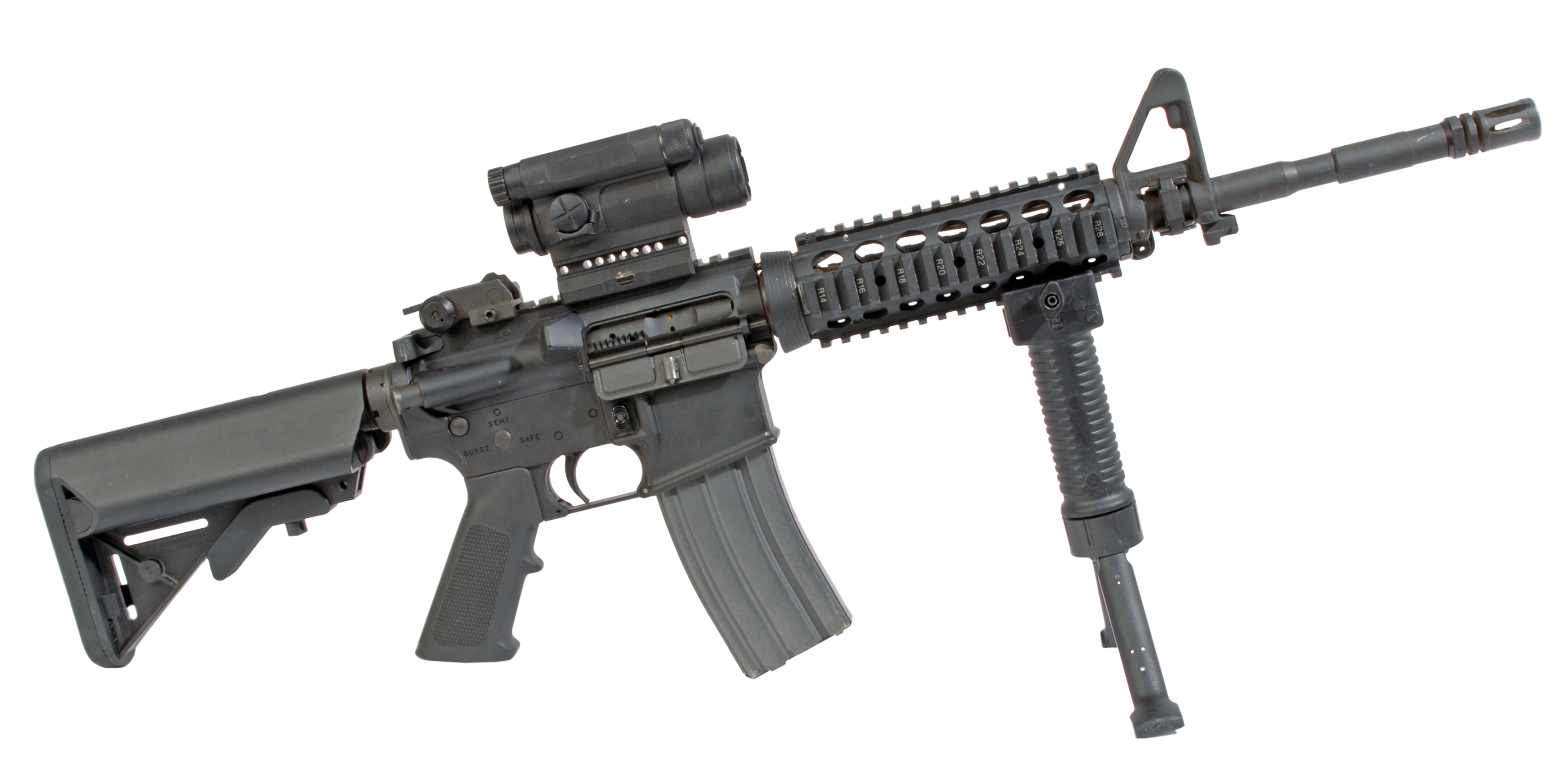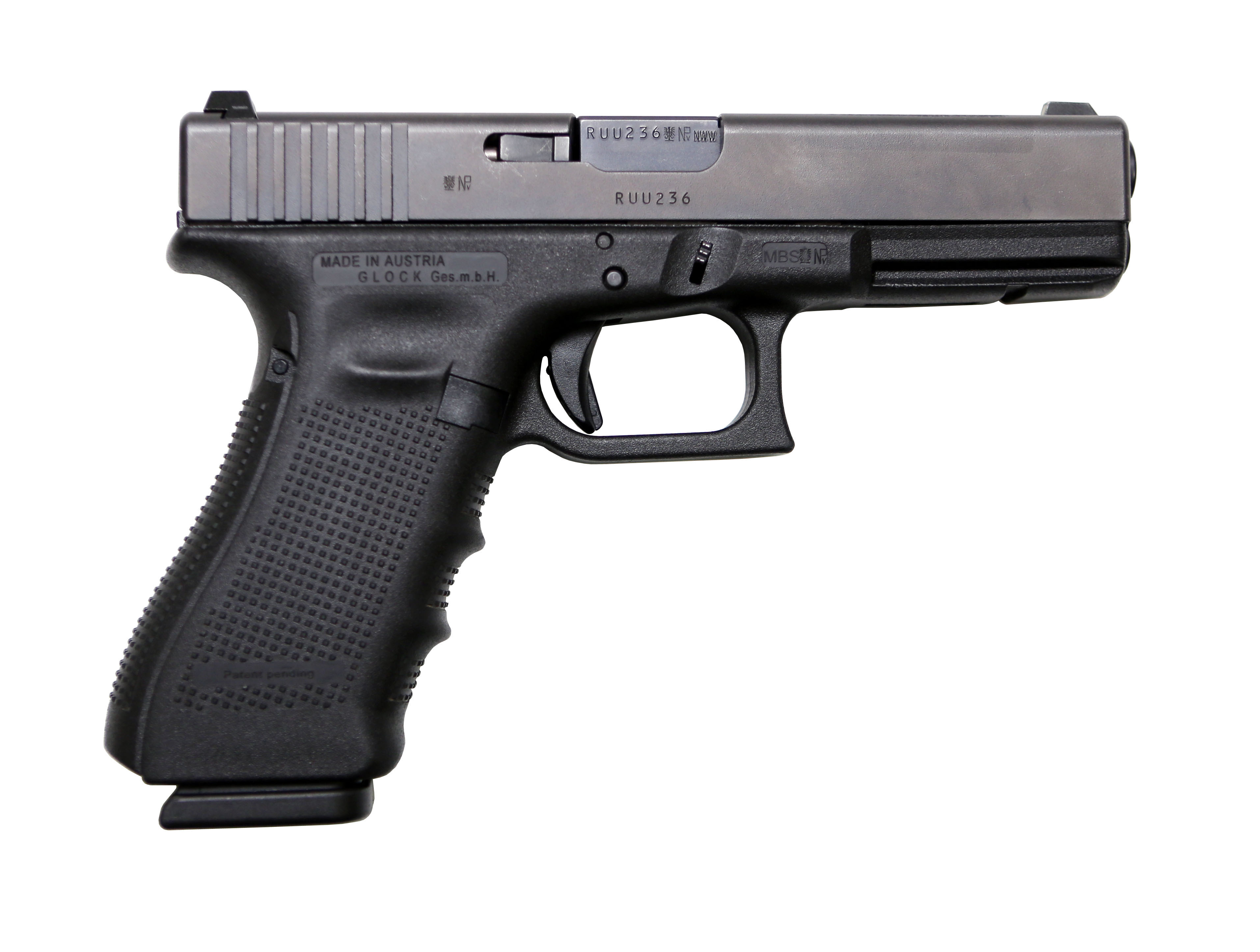|
Third Arm Weapon Interface System
The Third Arm Weapon Interface System, or Third Arm, is a passive, stabilizing device developed by the United States Army Research Laboratory, U.S. Army Research Laboratory (ARL) in 2016 to redistributes the weight of heavy firearms to make them easier to hold and carry. It weighs less than 1.8 kg (4 pounds), and consists of a mechanical appendage made out of carbon-fiber composite that has one end attached to a carbon fiber plate that fits inside an armor plate pocket and the other end attached to a Picatinny rail on top of the gun. It was to permit more accurate use of heavier weapons and reduce fatigue by displacing the weight of the weapon from their arms to their torso and mitigate firing recoil. As of 2018, the Third Arm is a prototype and is still in the testing phase of its development. History The development of the Third Arm began in 2015 as a collaborative effort in ARL’s Human Research and Engineering Directorate (HRED) and Weapons & Research Materials Director ... [...More Info...] [...Related Items...] OR: [Wikipedia] [Google] [Baidu] |
United States Army Research Laboratory
The U.S. Army Combat Capabilities Development Command Army Research Laboratory (DEVCOM ARL) is the U.S. Army's foundational research laboratory. ARL is headquartered at the Adelphi Laboratory Center (ALC) in Adelphi, Maryland. Its largest single site is at Aberdeen Proving Ground, Maryland. Other major ARL locations include Research Triangle Park, North Carolina, White Sands Missile Range, New Mexico, Graces Quarters, Maryland, and NASA's Glenn Research Center, Ohio and Langley Research Center, Virginia. ARL also has regional sites in Playa Vista, California (ARL West), Chicago (ARL Central), Austin, TX (ARL South), and Boston (ARL Northeast). DEVCOM ARL has three directorates: *Army Research Office, located in Research Triangle Park *Army Research Directorate *Research Business Directorate History Before the forming of the ARL, the United States Army had research facilities dating back to 1820 when the laboratory at Watertown Arsenal, Massachusetts, studied pyrote ... [...More Info...] [...Related Items...] OR: [Wikipedia] [Google] [Baidu] |
Firearm
A firearm is any type of gun designed to be readily carried and used by an individual. The term is legally defined further in different countries (see Legal definitions). The first firearms originated in 10th-century China, when bamboo tubes containing gunpowder and pellet projectiles were mounted on spears to make the portable fire lance, operable by a single person, which was later used effectively as a shock weapon in the Siege of De'an in 1132. In the 13th century, fire lance barrels were replaced with metal tubes and transformed into the metal-barreled hand cannon. The technology gradually spread throughout Eurasia during the 14th century. Older firearms typically used black powder as a propellant, but modern firearms use smokeless powder or other propellants. Most modern firearms (with the notable exception of smoothbore shotguns) have rifled barrels to impart spin to the projectile for improved flight stability. Modern firearms can be described by their caliber ... [...More Info...] [...Related Items...] OR: [Wikipedia] [Google] [Baidu] |
Picatinny Rail
The Picatinny rail ( or ), or Pic rail for short, also known as a MIL-STD-1913 rail, 1913 rail or STANAG 2324 rail (cancelled), is a military standard rail interface system that provides a mounting platform for firearm accessories. It was originally used for mounting of scopes atop the receivers of larger caliber rifles. Once established, its use expanded to also attaching other accessories, such as: iron sights, tactical lights, laser aiming modules, night vision devices, reflex sights, holographic sights, foregrips, bipods, slings and bayonets. An updated version of the rail is adopted as a NATO standard as the STANAG 4694 NATO Accessory Rail. Significance Because of their many uses, Picatinny rails and accessories have replaced iron sights in the design of many firearms and available as aftermarket add-on parts for most actions that do not have them integrated, and they are also on the undersides of semi-automatic pistol frames and grips. When adding a ... [...More Info...] [...Related Items...] OR: [Wikipedia] [Google] [Baidu] |
Association Of The United States Army
The Association of the United States Army (AUSA) is a private, non-profit organization that serves as the professional association of the United States Army. Founded in 1950, it has 121 chapters worldwide. Membership is open to everyone, not just Army personnel, nor is membership mandatory for soldiers. The organization publishes ''ARMY Magazine'' and the ''Green Book''. The current president is retired Army General Robert Brooks Brown. Membership Membership in AUSA is open to all Army ranks and all components are represented--including Regular Army, National Guard, Army Reserve, Government Civilians, Retirees, Wounded Warriors, Veterans, concerned citizens and family members. AUSA welcomes anyone who subscribes to the philosophy of a strong national defense with special concern for the Army. Community businesses and defense industry companies are also vital and contributing members of AUSA. Other membership categories include Community Partners and National Partners (for def ... [...More Info...] [...Related Items...] OR: [Wikipedia] [Google] [Baidu] |
Electromyography
Electromyography (EMG) is a technique for evaluating and recording the electrical activity produced by skeletal muscles. EMG is performed using an instrument called an electromyograph to produce a record called an electromyogram. An electromyograph detects the electric potential generated by muscle cells when these cells are electrically or neurologically activated. The signals can be analyzed to detect abnormalities, activation level, or recruitment order, or to analyze the biomechanics of human or animal movement. Needle EMG is an electrodiagnostic medicine technique commonly used by neurologists. Surface EMG is a non-medical procedure used to assess muscle activation by several professionals, including physiotherapists, kinesiologists and biomedical engineers. In Computer Science, EMG is also used as middleware in gesture recognition towards allowing the input of physical action to a computer as a form of human-computer interaction. Clinical uses EMG testing has a variety ... [...More Info...] [...Related Items...] OR: [Wikipedia] [Google] [Baidu] |
Prone Position
Prone position () is a body position in which the person lies flat with the chest down and the back up. In anatomical terms of location, the dorsal side is up, and the ventral side is down. The supine position is the 180° contrast. Etymology The word ''prone'', meaning "naturally inclined to something, apt, liable," has been recorded in English since 1382; the meaning "lying face-down" was first recorded in 1578, but is also referred to as "lying down" or "going prone." ''Prone'' derives from the Latin ', meaning "bent forward, inclined to," from the adverbial form of the prefix ''pro-'' "forward." Both the original, literal, and the derived figurative sense were used in Latin, but the figurative is older in English. Anatomy In anatomy, the prone position is a position of the body lying face down. It is opposed to the supine position which is face up. Using the terms defined in the anatomical position, the ventral side is down, and the dorsal side is up. Concerning ... [...More Info...] [...Related Items...] OR: [Wikipedia] [Google] [Baidu] |
M249 Light Machine Gun
The M249 light machine gun (LMG), also known as the M249 Squad Automatic Weapon (SAW), which continues to be the manufacturer's designation, and formally written as Light Machine Gun, 5.56 mm, M249, is the American adaptation of the Belgian FN Minimi, a light machine gun manufactured by the Belgian company FN Herstal (FN). The M249 is manufactured in the United States by the subsidiary FN Manufacturing LLC, a company in Columbia, South Carolina, and is widely used in the U.S. Armed Forces. The weapon was introduced in 1984 after being judged most effective (compared to a number of candidate weapons) to address the lack of automatic firepower in small units. The M249 provides infantry squads with a high rate of machine gun fire, combined with the accuracy and portability of a rifle. The M249 is gas operated and air-cooled, it has a quick-change barrel (allowing the gunner to rapidly replace an overheated or jammed barrel), and a folding bipod attached to the front of the w ... [...More Info...] [...Related Items...] OR: [Wikipedia] [Google] [Baidu] |
M240 Machine Gun
The M240 – officially the Machine Gun, 7.62 mm, M240 – is the U.S. military designation for the FN MAG, a family of belt-fed, gas-operated medium machine guns that chamber the 7.62×51mm NATO cartridge. The M240 has been used by the United States Armed Forces since the late 1970s. It is used extensively by infantry, most often in rifle companies, as well as on ground vehicles, watercraft and aircraft. Though it is heavier than some comparable weapons, it is highly regarded for reliability and its standardization among NATO members is a major advantage. All variants are fed from disintegrating belts and are capable of firing most types of 7.62 mm (.30/.308 cal) NATO ammunition. M240 variants can be converted to use non-disintegrating belts. There are significant differences in weight and some features among some versions which restrict the interchangeability of parts. The M240s used by the U.S. military are currently manufactured by FN America, the Ameri ... [...More Info...] [...Related Items...] OR: [Wikipedia] [Google] [Baidu] |
Shield
A shield is a piece of personal armour held in the hand, which may or may not be strapped to the wrist or forearm. Shields are used to intercept specific attacks, whether from close-ranged weaponry or projectiles such as arrows, by means of active blocks, as well as to provide passive protection by closing one or more lines of engagement during combat. Shields vary greatly in size and shape, ranging from large panels that protect the user's whole body to small models (such as the buckler) that were intended for hand-to-hand-combat use. Shields also vary a great deal in thickness; whereas some shields were made of relatively deep, absorbent, wooden planking to protect soldiers from the impact of spears and crossbow bolts, others were thinner and lighter and designed mainly for deflecting blade strikes (like the roromaraugi or qauata). Finally, shields vary greatly in shape, ranging in roundness to angularity, proportional length and width, symmetry and edge pattern; differen ... [...More Info...] [...Related Items...] OR: [Wikipedia] [Google] [Baidu] |
Military Technology
Military technology is the application of technology for use in warfare. It comprises the kinds of technology that are distinctly military in nature and not civilian in application, usually because they lack useful or legal civilian applications, or are dangerous to use without appropriate military training. The line is porous; military inventions have been brought into civilian use throughout history, with sometimes minor modification if any, and civilian innovations have similarly been put to military use. Military technology is usually researched and developed by scientists and engineers specifically for use in battle by the armed forces. Many new technologies came as a result of the military funding of science. Armament engineering is the design, development, testing and lifecycle management of military weapons and systems. It draws on the knowledge of several traditional engineering disciplines, including mechanical engineering, electrical engineering, mechatronics ... [...More Info...] [...Related Items...] OR: [Wikipedia] [Google] [Baidu] |
Firearm Components
A firearm is any type of gun designed to be readily carried and used by an individual. The term is legally defined further in different countries (see Legal definitions). The first firearms originated in 10th-century China, when bamboo tubes containing gunpowder and pellet projectiles were mounted on spears to make the portable fire lance, operable by a single person, which was later used effectively as a shock weapon in the Siege of De'an in 1132. In the 13th century, fire lance barrels were replaced with metal tubes and transformed into the metal-barreled hand cannon. The technology gradually spread throughout Eurasia during the 14th century. Older firearms typically used black powder as a propellant, but modern firearms use smokeless powder or other propellants. Most modern firearms (with the notable exception of smoothbore shotguns) have rifled barrels to impart spin to the projectile for improved flight stability. Modern firearms can be described by their caliber (i.e. b ... [...More Info...] [...Related Items...] OR: [Wikipedia] [Google] [Baidu] |






